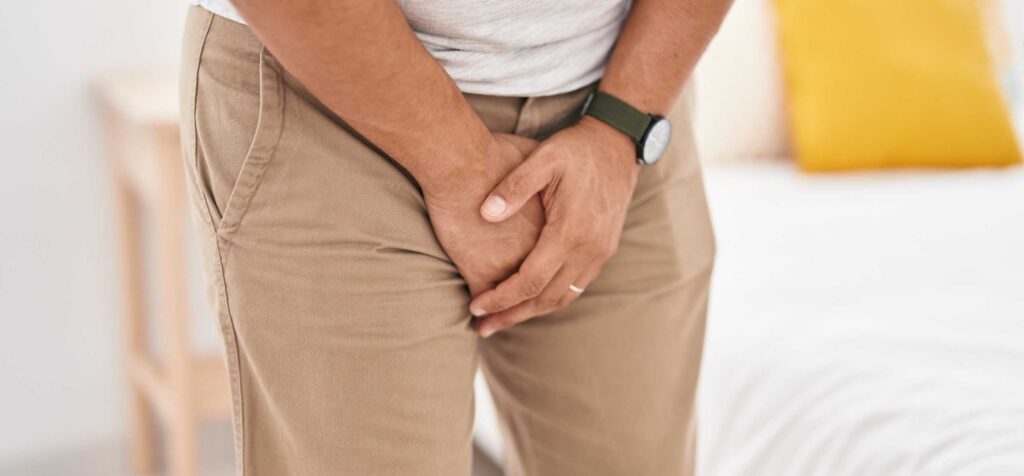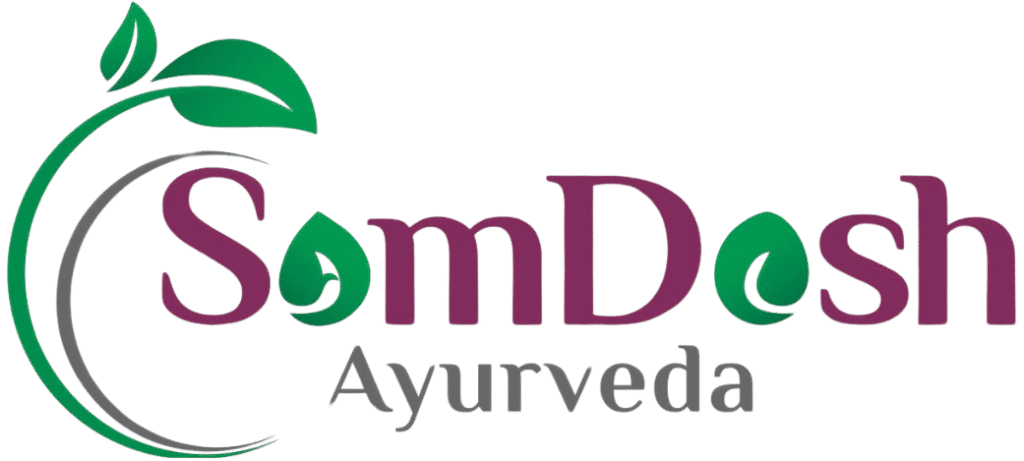Summary
A varicocele is a cluster of dilated veins (pampiniform plexus) in the scrotum—most often on the left side—caused by venous valve dysfunction and reflux. Standing and exertion raise pressure, so symptoms typically worsen as the day progresses and improve on lying down. Varicoceles can influence fertility via heat retention and oxidative stress, which may reduce sperm production and quality and, in some men, shrink the testicle over time.
Good to know: many varicoceles are asymptomatic and found incidentally. Care ranges from education and lifestyle cooling to procedural correction in selected cases. A structured plan with follow-up semen testing across one full sperm cycle (~3 months) gives the clearest picture of progress.
Quick Navigation
What is Varicocele?
A varicocele is like a “varicose vein” of the scrotum. Faulty valves in the internal spermatic vein allow backward flow (reflux), pooling blood in the pampiniform plexus. Left-sided dominance arises from anatomical drainage patterns. The local rise in temperature and altered microcirculation can affect testicular function.
Symptoms & When to See a Doctor
- Dull ache, heaviness, or dragging sensation—worse with standing, exercise, or at day’s end; eased by lying down.
- Visible or palpable “bag of worms” veins above the testicle.
- Fertility concerns or testicular asymmetry (one smaller/softer).
Seek evaluation if:
- Pain is persistent or limits activity.
- There is difficulty conceiving after regular, well-timed intercourse.
- You notice shrinking of a testicle or significant asymmetry.
- Sudden-onset varicocele on the right side (rare)—requires prompt assessment.
How Varicocele Affects Fertility
Mechanisms
- Heat retention: the testes need to be cooler than core body temperature; pooling blood raises temperature.
- Oxidative stress: venous congestion can increase reactive species that damage developing sperm.
- Hormonal microenvironment: altered blood flow may affect testicular signaling.
Potential Effects on Semen
- Reduced count (oligospermia) or total sperm number.
- Lower progressive motility (asthenozoospermia).
- Abnormal morphology (teratozoospermia).
- Higher DNA damage indices in some men.
Not every varicocele causes abnormal semen. Decisions are best made on combined findings: symptoms, clinical grade, testicular size, and semen trends.
Grading & Types
Clinical Grades (on exam)
- Grade I: small; felt only during straining (Valsalva) while standing.
- Grade II: moderate; palpable at rest while standing.
- Grade III: large; visible through the scrotal skin (“bag of worms”).
Other Terms
- Subclinical varicocele: not felt on exam; detected on ultrasound with reflux.
- Bilateral: less common; both sides involved (often left > right).
Diagnosis & Doppler Concepts
Diagnosis starts with a standing scrotal exam (often with a brief straining maneuver). Ultrasound with color Doppler helps confirm and characterize reflux. Semen analysis evaluates fertility impact; repeat testing after lifestyle changes or procedures tracks progress over time.
What Clinicians Look For
- Dilated pampiniform veins above the testis that increase with standing/straining.
- Reflux on Doppler during Valsalva maneuver.
- Testicular size and consistency (asymmetry may matter).
Context
- Correlate clinical grade with semen parameters and symptoms.
- Right-sided or sudden varicocele warrants careful evaluation.
- When fertility is a goal, follow trends across at least one full sperm cycle (~3 months).
12-Week Cooling & Support Plan (Medicine-Free)
Daily Cooling & Support
- Supportive underwear: snug but breathable briefs to reduce venous pooling during the day.
- Cooling breaks: brief cool (not icy) packs after strenuous activity; avoid direct ice burns.
- Posture cycles: alternate sitting/standing; short walks every hour to encourage venous return.
- Evening unload: lie down 10–15 minutes with hips slightly elevated if heaviness builds.
- Heat avoidance: skip hot tubs/saunas; keep laptops off the lap; be cautious with heated seats.
Movement & Core
- Regular moderate activity 150–210 min/week; 2 strength sessions with exhale-on-effort to avoid prolonged straining.
- Avoid maximal straining or heavy lifts without coaching and proper breath mechanics.
Nutrition & Recovery
- Whole-food pattern: vegetables, fruits, legumes, whole grains, nuts/seeds; balanced plates.
- Hydration through the day; extra fluids in heat or training.
- Sleep 7–8 hours; dim screens 60 minutes before bed; consistent schedule.
- Stress regulation 10–15 min/day (breath work, mindfulness, yoga).
- Plan semen re-test after ~12 weeks to assess trend.
Ayurvedic Care
Assessment focuses on Vata and Pitta balance, agni (digestion), and building ojas (vitality). The goal is to calm heat and congestion while supporting testicular environment across one full sperm cycle.
What Your Plan May Include
- Dinacharya: sleep timing, regular meals, gentle daily movement, and calming breath practices.
- Routines for cooling & grounding: food choices and daily habits to reduce internal heat load.
- Panchakarma (when indicated): individualized protocols (e.g., Basti-focused work, soothing head therapies) to settle stress and support balance.
Integration Principles
- Combine routines with semen trend tracking and clinical follow-up.
- Emphasize sustainable habits over extremes; align with work/sport realities.
- Couple-centered planning when conception is time-sensitive.
Work, Posture & Sport Tips
- For long standing shifts: mini-breaks every 45–60 minutes; heel raises or short walks.
- For desk work: hips slightly higher than knees, feet supported, stand briefly each hour.
- Cycling: breathable chamois, periodic standing, avoid very long hot sessions; cool down after rides.
- Strength training: avoid breath-holding; use controlled exhalation during effort.
When to Consider Correction
Procedural correction is considered when a clinically significant varicocele coexists with abnormal semen parameters, testicular discomfort that limits life, or progressive testicular asymmetry—especially in couples seeking conception. Technique choice (surgical or interventional) is individualized by the treating team.
Potential Benefits
- Reduced heaviness or ache for many men.
- Improved semen parameters over subsequent months in selected cases.
- May support testicular size maintenance when done appropriately.
Considerations
- Benefits are not universal; expectations should be based on grade, age, semen trends, and partner factors.
- Plan for follow-up semen testing at ~3 and ~6 months post-correction.
- Assisted reproduction may still be recommended depending on the couple’s timeline.
After Correction: Recovery & Follow-up
- Early rest with gradual return to light activity; avoid heavy straining per your surgeon’s guidance.
- Supportive underwear and gentle cooling can ease discomfort.
- Track symptoms and semen parameters over the next 3–6 months.
- Coordinate with the fertility plan—timelines matter for the couple.
Myths vs Facts
Myth
- “Every varicocele causes infertility.”
- “Surgery always fixes fertility.”
- “Heat exposure doesn’t matter.”
- “If semen is normal once, I never have to recheck.”
Fact
- Many men with varicoceles are fertile; treatment decisions are individualized.
- Correction helps selected men; outcomes depend on multiple factors and timelines.
- Heat clearly influences testicular environment; avoidance helps symptoms and planning.
- Trends over time guide decisions—retesting after 12 weeks is often useful.
Need Personalised Guidance?
Education helps, but choices about monitoring vs correction are individual. For a discreet, integrative plan aligned with your goals—and no medicines mentioned—book a consult:
Doctors for Varicocele
Dr. Ranjeet Singh
BAMS, DMR — Male Infertility & Sexual Health
Focus: varicocele counseling, semen trend tracking, couple-centric planning with integrative routines and coordination with procedural teams.
Dr. Megha Yadav
BAMS — Female Infertility & PCOS/PCOD
Aligns female-side timelines (ovulation, uterine factors) with varicocele management to optimize couple outcomes.
Disclaimer
This page is educational and not a substitute for in-person medical advice, diagnosis, or treatment. Procedural decisions are individualized by specialists after evaluation. In line with policy, no medicines are mentioned.
Written By : Dr. Ranjeet Singh


